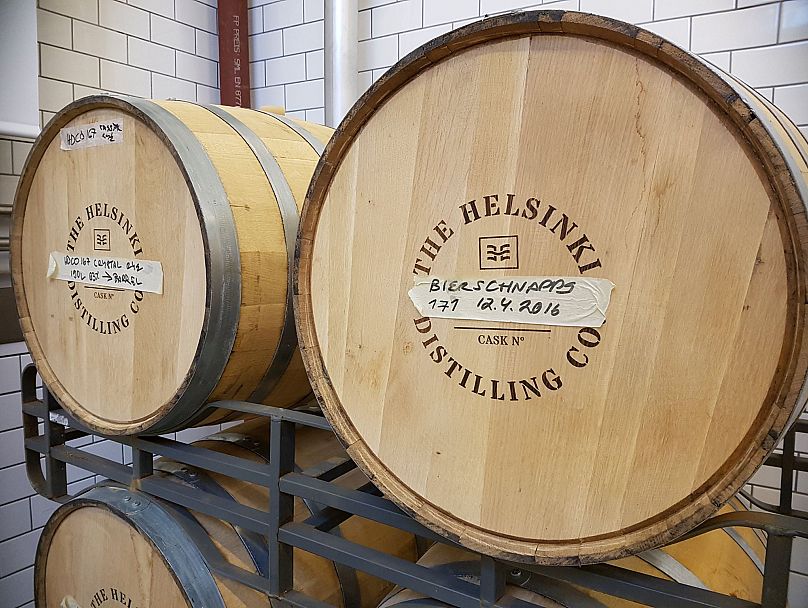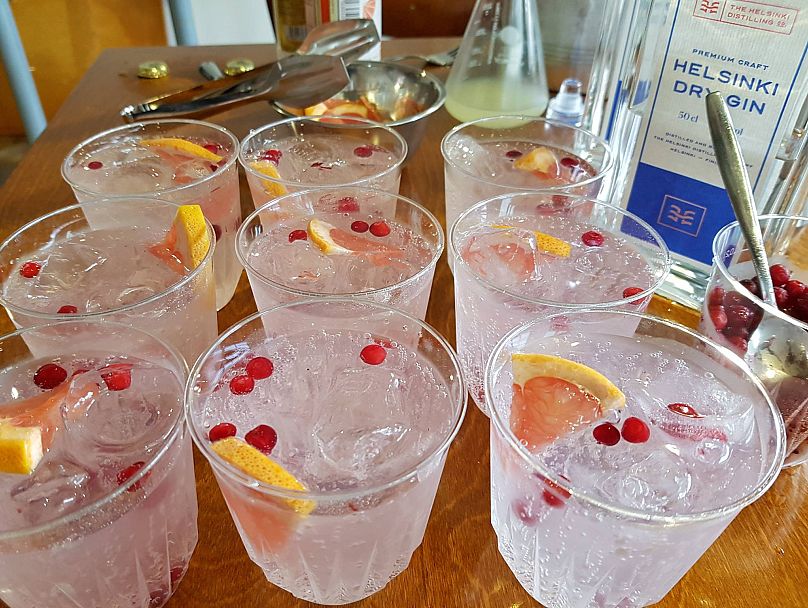The ryes have it: Meet the lads from Kyrö Distillery to find out why Finns are swapping out vodka for craft whisky and gin.
There’s something in the water in Finland.
In the last decade the Finns, known for their love of vodka, have been enjoying a whole new craft distillery scene, with small-batch domestic gins and whisky now more popular than ever.
That same trend can be found all across the Nordic region with dozens of distilleries in Denmark, Norway, Sweden and Iceland - above the Arctic Circle, and even in the Faroe Islands.
For one group of friends, the idea to start their own distillery came, as many good ideas do in Finland, during a sauna session.
Fast forward seven years and Kyrö Distillery on the country’s west coast has become the best-known of the new Finnish brands.
“We go with the principle of bringing people together, and that’s something we started in sauna, and we were thinking how to turn that into a product” explains Mikko Koskinen, one of the distillery founders who now heads up the brand’s marketing efforts in Berlin.
“We came to the conclusion that we need to make a product that appeals both to connoisseurs but also to people who are just starting their journey in whisky or gin.”
Kyro’s aim is not to be an entry-level gin when it comes to price or quality, but consumers also don’t need to be experts to appreciate the products which use local botanicals and fruits like lingonberry and rhubarb to add depth of flavour.
“With our whisky there’s some clear notes of spiciness when it comes to the rye, we use new white American oats which gives vanilla and sweetness which everyone can get” says Koskinen, adding that other notes of apricot come later.
For all the Kyrö spirits the point of differentiation is using rye as the base ingredient, a grain closely associated with Finland but more usually baked in bread.
Selling Finnish spirits abroad
The idea of having a distinctive local story, and a product that reflects the local environment or community, is important to Finnish craft distillers.
Kyrö’s home is an old dairy that had been used as a car garage for years before they converted it.
In the Finnish capital, The Helsinki Distilling Company became the first spirits distillery for more than 100 years when it opened in the Slaughterhouse District in 2014, in a building that had been a soap factory and later a power plant.
And Ägräs Distillery in the historic village of Fiskars in southwest Finland uses local water, botanical roots, seeds, flowers, herbs and berries in its crowdfunded distilling process.
The storytelling and in-depth local knowledge behind the spirits has made Finnish gin and whisky attractive to overseas markets as well as at home.
“Finland can be seen as a unique, exotic, Arctic and interesting new country of origin for premium spirits, and this is an image we want to develop further,” says Esa Wrang of Food from Finland, a government export promotion initiative.
A short, but intensive, summer growing season with midnight sun produces crops bursting with flavour - and the country’s groundwater is so pure it can be tasted directly from springs or taps. Finnish farming is largely pesticide-free and often organic, with freezing temperatures during the harsh winter killing harmful bacteria in the soil.
Those high-quality selling points have helped fuel a growth in premium spirits from Finnish companies to Japan and the US, but especially to Europe.
“The main target markets of alcohol beverages exports are Sweden and Estonia due to the travel retail business” on ferries, explains Wrang, while other important markets are Poland, Denmark, Germany and the UK.
Changing trends for gin and whisky
The booming market for craft distillery products is not just being seen in the Nordic region, but all across the world - with producers popping up in some surprising places like India, Australia and Japan.
Experts say there’s a genuine openness on the part of consumers to sample spirits from non-traditional countries, especially if they’re making a unique product and not just trying to replicate another brand.
“These days there’s complete acceptance, and indeed excitement, that whisky is coming from pretty much every country in the world where it’s legal” says Dave Broom, an author who has written extensively about whisky.
“It’s one of the most heartening things. The best distillers around the world have been doing it since their inception. They’re not trying to make scotch. They love single malt but they’re not trying to make scotch”
“They look at what grows around them and what their own traditions are, and saying they want to make a whisky that reflects their sensibilities and their location. And that for me is really exciting.
Emma Stokes is a gin expert who’s written a number of books about cocktails, and runs the Gin Monkey website.
“It was Bombay and Hendricks that premium-ized gin, and dragged it from being something your nan drinks into something that was cool.” she laughs.
At first London dry-style gins were popular, and then came contemporary or new Westernstyle gins in the USA. After that, flavoured and coloured gins were en vogue, stretching the category definition somewhat.
“Gin’s quite simple. If the spirit is juniper-dominant it’s gin. When we’re judging competitions we’re still looking for that juniper in there in order to be a gin, otherwise you’ve just got a flavoured vodka,” explains Stokes.
Consumers though are now favouring more authenticity in their gin, after the initial rush of interest in novelty flavours - something that plays to the strengths of Finnish craft distilleries.
“It also helps that gin is now being produced all around the world, and different countries are putting their stamp on things and you’ve got lots of weird and wonderful botanicals in the mix that you maybe wouldn’t normally have access too” says Emma Stokes, who also runs World Gin Day in June every year.
“I think it’s important for gin to reflect the country it’s being made in.”













